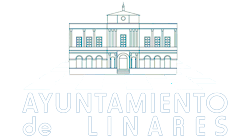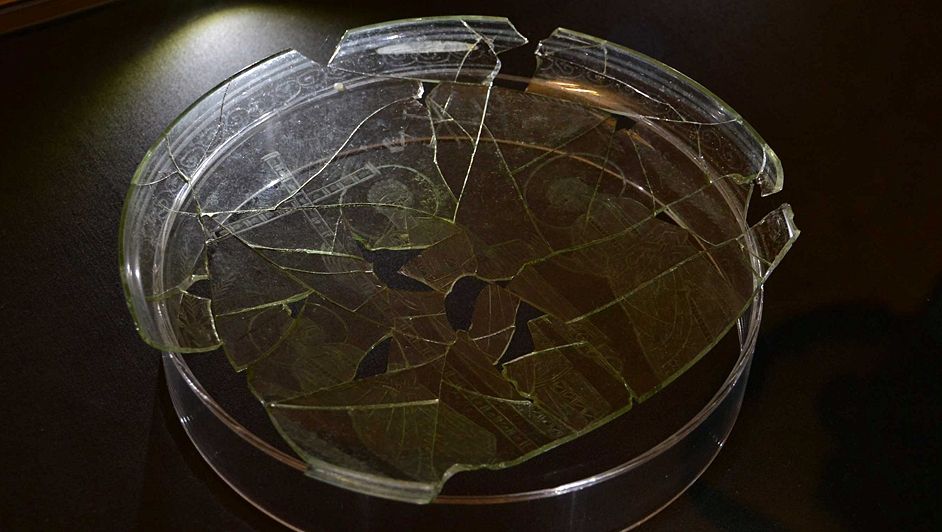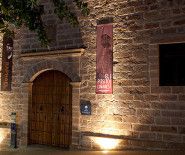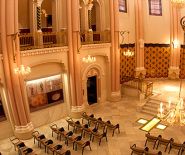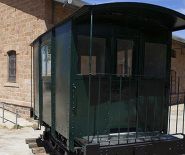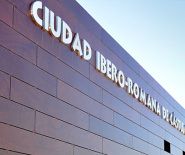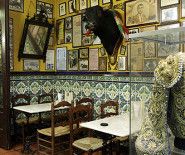The main remains of the archaeological site of Cástulo are kept in this emblematic Renaissance aristocratic building from the 16th century, which used to belong to the Dávalos Biedma family. This family settled in Linares during the Christian Conquest. The creation of this museum is owed to the initiative of Rafael Contreras de la Paz, who was worried about the constant plundering of the ancient city. The distribution of the pieces along 6 rooms shows the evolution of the city from the Paleolithic to the Christian conquest, after which the city was gradually abandoned. This way, the exhibition displays thousands of years of our history.
Inside de museum, visitors can have a look at the ancient Iberian-Roman city of Cástulo through its rooms. They describe minutely the city from the Prehistory to the Middle Ages. The constant excavations carried out in the site will contribute to the wealth of the collection of the museum.
ROOM 1. Origin of Cástulo
In this room the prehistoric origin of Cástulo from the Paleolithic to the Bronze Age are recreated. The latter is especially important because the Iberian oppidum (a fortified village in the heights) was developed during this era. Visitors can also observe how people from eastern Mediterranean enriched the local culture, thus creating a cultural melting pot which is a distinguishing mark of this city. The mining past of Cástulo is perfectly proved thanks to the tools used for mining and metallurgic works.
ROOM 2. Funeral architecture
The stunning courtyard of the palace holds a magnificent sample of Iberian and High Roman Empire architecture. Friezes, capitals and sculptures offer visitors a clear idea about the Iberian-Roman religiousness, especially that related to the life after death.
ROOM 3. The Iberian necropolises
Here, there are ex-votos (small figures used as offerings), golden links, censers, cinerary urns and all kind of grave goods from the Iberian period.
ROOM 4. The Roman city
The High Roman Empire in Cástulo is perfectly described in this room. There is information about the ancient Roman necropolises, located outside the city, and where the Iberian customs are still present. Examples of numismatics from Cástulo, statues, ceramics and objects from the everyday life give visitors a clear view of the importance that the city of Cástulo had in the context of the Romanisation of the Iberian Peninsula.
ROOM 5. Cástulo from the Antiquity to the Christian conquest
After the crisis of the 3rd century, the Roman Empire began its fall and Cástulo wasn’t indifferent to that event. In this room, elements from the Visigothic, Islamic and Christian culture are exhibited, showing the gradual but inevitable depopulation and consequent disappearing of the city.
ROOM 6. Epigraphy
Epigraphy has prime importance in the political and social life of the Roman civilization. Public buildings such as the Thermae, the circus and the theatre, legal regulations and the epitaphs in tombstones offer researchers and visitors first-hand information that helps discovering the history of the wanted city.
ARCHAEOLOGICAL MUSEUM OF CÁSTULO
General Echagüe, 2 – 23700 Linares, Jaén
Phone: (+34) 953 10 60 74
Email: museoarqueologicolinares.ccul@juntadeandalucia.es
Web: www.museosdeandalucia.es/culturaydeporte/museos/MALI
Opening hours:
Winter:
Tuesday – Saturday: 09:00 – 19:30.
Sundays and public holidays: 09:00 – 15:30.
Summer (June – September):
Tuesday – Sunday and public holidays: 09:00 – 15:30.
Tickets:
Free access



